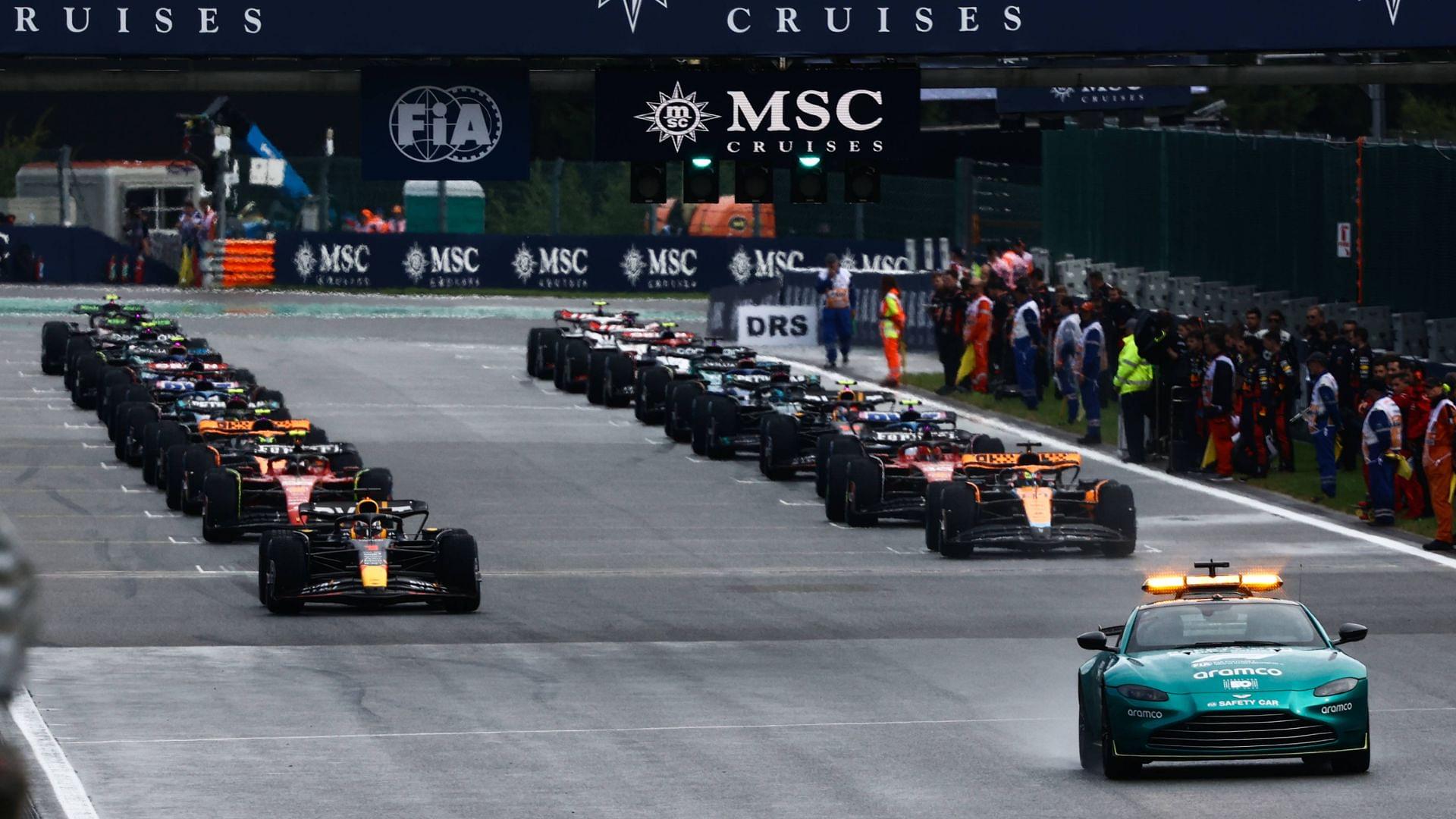
The formation lap is the lap that is taken by the F1 cars around the circuit right before the start of a race. The cars get out of the pitlane, complete the installation lap, and are then pushed onto the grid by the mechanics. As the clock hits the race time, the formation lap gets underway.
While the formation lap doesn’t seem like a big deal, it is actually of crucial importance for many reasons. Tire and Brake Warming The drivers need temperature in the tires for a good launch, and for the rubber compound to have good grip on the tarmac. The F1 cars use tire warmers, yet they only warm the surface of the tires and don’t really induce any heat in the carcass of the tire.

Hence, all drivers use the formation lap to generate heat into the tires by weaving the car around the lap, forcing energy into the tires. But this again only helps in optimizing the surface temperature with the lateral movement of the tire. Inducing heat into the carcass of the tire is done with the brakes.
F1 brakes reach 10000C under heavy braking zones. The driver slowly builds the heat into the brakes by accelerating and then braking. As the brakes dissipate the heat, the carcass is warmed up from the inside.
Getting the brakes into the operational window also helps avoid lock-ups going into the first corner. However, as the cars sit on the track after the formation lap, the temperatures from the tires and brakes start to drop. Hence, every driver has a different warm-up procedure depending on the starting position.
The driver on pole waits the longest and hence induces more heat into the tires than others. Assessing the track The F1 cars are extremely sensitive to track temperature and even a small change can affect the approach of a driver. As a result, all of them use the formation lap as an opportunity to assess the track before the race actually starts.
Drivers will often try different lines and see if there’s enough grip off the racing line. It also gives an idea of whether the track has accumulated any dust since the last session. In changeable conditions, the drivers test out whether a change of tire compound is necessary as the teams do not control the weather.
Rules of the Formation Lap Each driver leaves their grid spot in ascending order, following the car in front. The following car cannot drop off massively behind the car that is in front. The rule generally states that two consecutive cars have to be within 10 car lengths of each other.
Overtaking on the formation lap isn’t allowed under normal circumstances. However, in case a driver crashes out, stalls on the grid, or suffers a problem on the formation lap that slows him down, then the following car is allowed to overtake. The procedure of Formation Lap The drivers go around the circuit once during the formation lap and then slot into their respective grid positions.
Drivers often do burnouts on the main straight to spike the surface temperature of the tires. Once the cars have slowly slotted into their positions, the five red lights go out and the action starts. A safety car follows the 20 F1 cars around the formation lap in case there’s a mishap.
The medical car slots at the back of the grid at the end of the formation lap and again follows them around for the first lap, albeit at a much higher pace. It pits after the first lap if there isn’t any incident, while the safety car pits after the formation lap itself..














